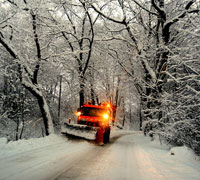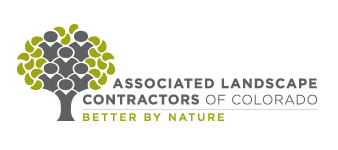|
 It’s that time of year again—time to negotiate snow contracts. It’s that time of year again—time to negotiate snow contracts.
Snow and ice management is a special subset of landscape services that has its own unique contractual issues. When you’re finalizing contracts this season, make sure you have these eight key stipulations:
No. 1 - Who is liable
Defining who is liable in snow and ice agreements is top priority. Consider how to limit your liability on the site. If the client only wants snow and ice management for 4 inches or more of snow, but a resident slips and falls after a 1-inch storm, do you as the contractor, have liability?
What responsibility have you assumed for each event—or the whole season? Make sure these definitions are covered in the contract. Also important is the concept of indemnification. Don’t provide blanket indemnification. Indemnify only your own negligence.
No. 2 - Manageable liability
Define what your company’s liability really is in terms of potential snow and ice management scenarios. For example, clearly define at what depth you will plow, clear walks, etc. Do you always clear north side walks even with just a trace of snow? How often do you come back to deal with ice at building entrances following the storm?
How/when does temperature enter into the equation? For example, Monday’s predicted 2.5-inch storm is under the 4-inch plow minimum. But temps won’t be above 10 degrees all week and a heavier snow is forecast for Wednesday. Does the owner/manager understand that Monday’s 2.5 inches will likely be packed and icy on Wednesday and as a result, plows may not be able to clear the next storm down to pavement?
No. 3 - Definitions of your work and the client’s expectations
Minimum accumulation standards are critical. For example, are you responsible for creating a snow-free property on all walks and drives? At what depth must the snow be cleared?”
No. 4 - Specific locations
Identify where the work is to be done on the property. Are you responsible for all the shoveling? Or just for plowing the parking lots? Which sidewalks come under your care? For HOAs, do mail kiosks need special attention? Or should the homes of special-needs people have priority shoveling status in major storms because of deliveries related to their medical needs?
No. 5 - Accurate definition
Clarify that the work is “snow and ice management,” not “snow removal.” You probably are pushing piles of snow from one place on the property to another. You’re probably not removing the snow completely. Using the term “snow removal” in a contract might come back to bite you.
No. 6 - Specific work in very large snow events
Think about serious blizzards in the past. Do you get additional compensation in these snow events? If so, these large snow events need to be specifically defined in the contract to ensure that you are paid accordingly. In large snow events, how might your services change? Are you still required to have snow plowed by 7 a.m.? What about clearing walks if the temperature is near zero degrees with a wind chill of 10 below? When conditions like these might threaten the health of your personnel, have you specified the contingencies or limitations of service?
Contracts should consider factors that are beyond the contractor’s control. If city streets become impassable and prohibit sidewalk crews from arriving on time, does your contract cover this eventuality? What about providing heavy equipment like front-end loaders that your company does not own? Do you have an “out” built into the contract if your sub with the loader shows up late? Be sure you address large and unusual events.
No. 7 - What is NOT included
Make it clear what is not covered by the contract. For example, are you responsible for sweeping up sand after the snow is gone? Is that part of the job—or not included? Be specific about what you do NOT do.
No. 8 - Preexisting conditions
Specify any and all damage on the property when you begin the contract. Is there a broken curb? Is there damage to shrubs or landscape near places that will be plowed or shoveled? Next spring, you don’t want to be held liable for damage that happened prior to your term of service. Put it all down on paper.
This article originally appeared in the August 28, 2013 issue of Colorado Green NOW. Some liability issues have changes with new state legislation. Learn about the new law at the August 28, 2018 seminar "Understanding the Snow Removal Liability Limitations Act".
Read more in this issue of Colorado Green NOW:
Get the latest recommendations for cool-season color
Colorado companies place in Lawn & Landscape Top 100
OSHA training video to help prevent strains and sprains
The secret life of soil
|




